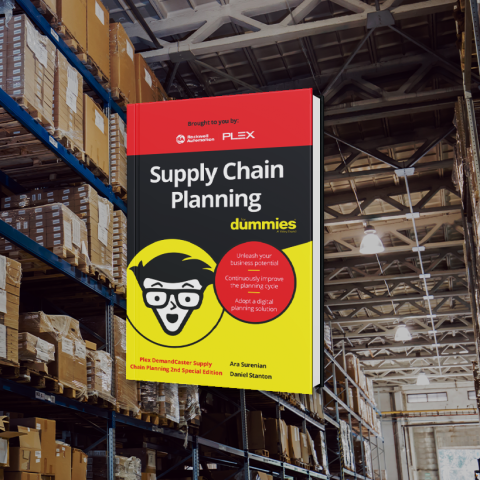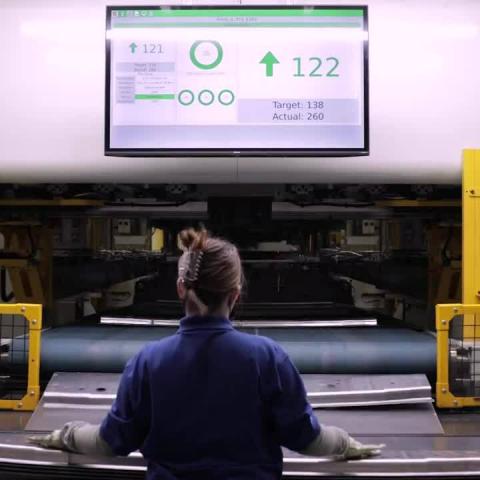Guide to Advanced Product Quality Planning (APQP)
Looking to learn more about Advanced Product Quality Planning (APQP)? We cover everything from definition to implementation.
APQP is a process designed to provide a clear understanding of customer wants, needs and expectations. This will support you and your business in delivering the best possible products and exceeding these expectations. APQP is one of the five core tools for effective quality management alongside PPAP, FMEA, MSA and SPC, and is particularly valuable in manufacturing industries where there is a risk of production and process failures. The APQP process reduces these risks, provides greater quality control, and increases business success.
In order for you to benefit from implementing APQP into your production processes, you need to understand how it works and where it adds value. In this guide, we will discuss:
- What is APQP?
- Why is APQP Important?
- When to Apply APQP
- The Five Phases of APQP
- How to Implement APQP
- Developing a Product Quality Plan (PQP)
- APQP and PPAP
What is APQP?
APQP is a structured approach to product and process design. The framework includes a set of quality requirements that allow suppliers to create products that meet the expectations of their customers.The core function of APQP is to identify the requirements of the customer. Manufacturers can then create a product quality plan for developing and manufacturing products that meet those requirements.
APQP is also used to facilitate communication and collaboration between engineering activities. This is done using a Cross Functional Team (CFT), involving manufacturing, marketing product design and other relevant departments.
There are five key phases to APQP, which we will examine in more detail further on in the article.
Why is APQP Important?
APQP is important for both customer and supplier because there is a structured agreement in place that outlines expectations and specifications for a product. This avoids any confusion or misinterpretation during planning and production, creating a platform for efficient communication.
The business benefits of implementing APQP include:
- Product conformity
- Improved quality of product
- Improved customer service
- Improved customer satisfaction
- Faster time to market
- Transparent communication
- On-time products at a low cost
- Improved risk mitigation
- Improved Design for Manufacturing and Assembly (DFM/A)
- Lower cost solutions selected earlier in the process
- Necessary changes identified earlier
APQP benefits OEMs dealing with multiple supply chains and suppliers looking to achieve part approval and compliance.
When to Apply APQP
It’s also important to know when and how to implement APQP to maximize benefits from the process. APQP is typically used for New Production Introductions (NPIs) when OEMs and suppliers are working together to develop a new product. It supports product development by using risk-based tools to focus on the design, service, quality control and continuous improvement of a product. Identifying risks early allows teams to act before waiting for a failure to occur.
APQP should also be applied if a product or process is changing after its release, ensuring the risk of the change is managed successfully and doesn’t create any problems.
The Five Phases of APQP
There are five concurrent phases and a pre-planning stage involved in the APQP process. It involves the Cross Functional Team (CFT) of engineers, manufacturers, marketers, and other core functions so communication and collaboration are important. A project manager will be responsible for managing and planning the process.
Section 0: Pre-Planning
Pre-planning begins with assumptions, concepts, and past knowledge. Standard work practices and significant change expected should be listed down to support section 1 – plan and define.
Section 1: Plan and Define
This section translates customers wants, needs, and desires into production requirements. It involves gathering the necessary data from the customer and using the information to outline characteristics and specifications. The design, reliability and resource requirements of the product can then be defined.
Outputs:
- Design goals
- Reliability and quality goals
- Preliminary Bill of Materials (BOM)
- Preliminary process flow chart
- Preliminary listing of special products and process characteristics
- Product assurance plan
- Management support
Section 2: Product Design and Development
The focus of this section is the design and development of the product. It should also involve a product feasibility assessment. A complete design review and verification is carried out using prototypes and material specifications and equipment requirements should be defined in this section.
Design Failure Mode and Effects Analysis (DFMEA) and Design Verification Plan and Report (DVP&R) are also used in this section to assess failure probability.
Outputs:
- Design Failure Mode and Effects Analysis (DFMEA)
- Design for Manufacturability and Assembly (DFM/A)
- Design verification
- Design reviews
- Prototype control plan
- Engineering drawings (including math drawings)
- Material specifications
- Drawing and specification changes
- New equipment, tooling, and facilities requirements
- Special product and process characteristics
- Testing equipment requirements
Section 3: Process Design and Development
This section identifies the techniques and measurement methods that will be used in the manufacturing methods. These details are used to bring the design engineer’s vision to life.
Outputs:
- Packaging standards and specifications
- Quality system review
- Process flow chart
- Floor plan layout
- Characteristics matrix
- Process Failure Mode and Effects Analysis (PFMEA)
- Pre-launch control plan
- Process instructions
- Measurement Systems Analysis (MSA) plan
- Preliminary process capability study plan
- Management support
Section 4: Product and Process Validation
This is the test phase that validates that the manufacturing process and the final product meet the requirements of the customer. Production Part Approval Process (PPAP) should be ready for submission and once this is approved production can begin.
- Significant production run
- MSA results
- Preliminary process capability study
- Production Part Approval Process (PPAP)
- Production validation testing
- Packaging evaluation
- Production control plan
- Quality planning sign-off and management support
Section 5: Launch, Assessments, and Continual Improvement
Production begins in this section and there should be a focus on evaluating and improving processes. This involves reducing process variation, identifying issues, and corrective action (both internal and external) that supports continual improvement.
Outputs:
- Reduced variation
- Improved customer satisfaction
- Improved delivery and service
- Effective use of lessons learned
How is APQP related to PPAP?
Product Part Approval Process (PPAP) is used to highlight the evidence collected throughout the APQP process. This ensures the customer that the supplier is delivering the quality that is expected. PPAP includes details on the production environment, tools, machines, processes, personnel, and conditions that could affect the quality of the part.
There are 18 elements involved in PPAP that determine the success of the first trial run:
-
Design Documentation
-
Engineering Change Notice
-
Customer Engineering Approval
-
Design Failure Mode and Effects Analysis (DFMEA)
-
Process Flow Diagram
-
Process Failure Mode and Effects Analysis (PFMEA)
-
Control Plan
-
Measurement System Analysis (MSA)
-
Dimensional Results
-
Design Verification Plan and Report (DVP&R)
-
Initial Process Studies
-
Qualified Laboratory Documentation
-
Appearance Approval Report (AAR)
-
Sample Production Parts
-
Master Sample
-
Checking Aids
-
Customer Specific Requirements
-
Part Submission Warrant
The purpose of the process is to minimize errors and ensure both supplier and customer are happy with the result. You can learn more about the Production Part Approval Process (PPAP) by reading our in-depth guide.
APQP requires a lot of work as there are so many different people and supply chains involved. The result is a lot of laborious administration, involving documents, processes and data, and the traditional paper-based workflow can lead to repetitive manual work and human error becoming a risk.
Digitizing APQP can save time with PPAP, FAI, and CMM and leads to repeatable, fast processes. Plex can support businesses looking to digitize their Product Quality Planning (PQP), achieving operational excellence.




